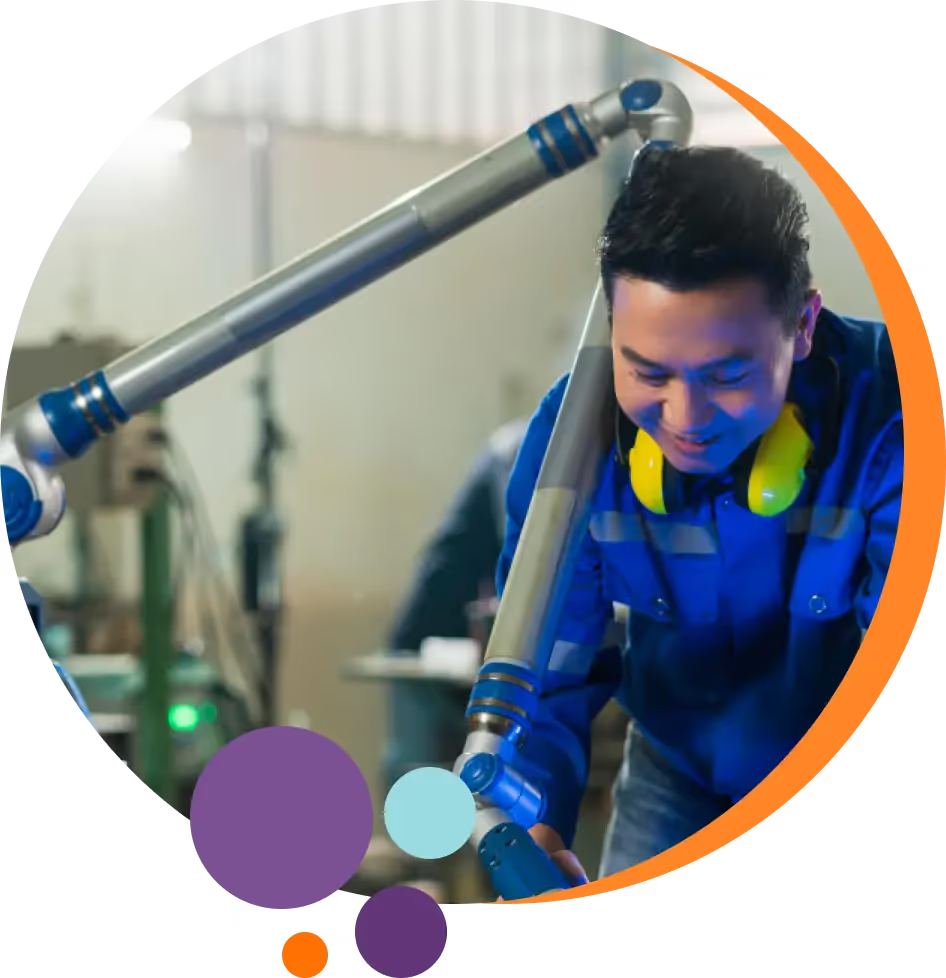Understanding the Role of Mechatronics in Healthcare
Mechatronics has surged into the healthcare domain over recent years to spawn numerous innovations and transformations. This section explores the current market dynamics of mechatronics in healthcare, its practical applications, and its profound impact on patient care and clinical practices.
The Current Market of Mechatronics in Healthcare
The infusion of mechatronics in healthcare plays a pivotal role in reshaping the sector in several significant ways.
One of the most remarkable developments is the application of mechatronics in robotic-assisted surgery. The worldwide medical robots market has seen substantial growth, surging from $11.17 billion in 2022 to $13.25 billion in 2023. It reflects a significant compounded annual growth rate (CAGR) of 18.6%.
This groundbreaking technology empowers skilled surgeons to wield precision instruments through intuitive software interfaces that are revolutionizing the surgical landscape. It allows for complex procedures to be conducted with remarkable precision and minimal invasiveness, leading to reduced recovery times and a decrease in patient trauma.
The realm of assistive medical devices is also experiencing a remarkable evolution. Mechatronics has given rise to a diverse range of devices, such as robotic exoskeletons and smart prosthetic limbs, which are currently making a tangible difference in the lives of individuals with mobility challenges. These devices rely on intricate networks of sensors, actuators, and control algorithms that work together to significantly enhance the quality of life for those with disabilities.
Mechatronics is also playing a critical role in advancing medical imaging technologies. By integrating intricate mechanical systems, sophisticated sensors, and powerful software, high-resolution imaging devices have become more precise and accessible. This advancement is not only bolstering the accuracy of diagnostics but also opening new avenues for more effective medical interventions.
In the realm of healthcare instrumentation, mechatronics is at the forefront. These innovative systems facilitate real-time data collection and analysis, transforming how medical data is managed. The integration of mechatronics with cloud computing fosters the seamless sharing, storage, and retrieval of healthcare data. This shift towards a collaborative, data-driven approach is a significant leap forward in healthcare technology.
In essence, mechatronics is not merely about integrating technology into healthcare; it represents a profound revolution that is currently reshaping the healthcare landscape. This field is leveraged by physicians, paramedics, EMT professionals, and the pharmaceutical industry. From refining surgical precision to enhancing the quality of life for individuals with disabilities, mechatronics is currently enabling healthcare professionals to provide more efficient and effective care.
This transformation is underpinned by a dynamic amalgamation of hardware, software, and innovative engineering that has ushered in a future where healthcare is synonymous with transformation rather than just treatment.
.webp)
Applications of Mechatronics in the Healthcare Sector
Let us explore the myriad applications of mechatronics in healthcare to uncover how this multidisciplinary field is transforming the way we approach healthcare and patient well-being.
Prosthetics
One of the most impactful applications of mechatronics in healthcare lies in the realm of prosthetics. The robotic prosthetics market is expected to achieve a CAGR of over 10% from 2023 to 2032, indicating the prevalence of advanced technologies, including mechatronics, in this sector.
For individuals who have experienced limb loss, mechatronic prosthetic limbs offer a glimmer of hope and the possibility of regaining lost functionality. These state-of-the-art prosthetics employ a combination of advanced sensors, actuators, and control systems that mimic natural limb movements.
Traditional prosthetic limbs, while functional, often lack the sophistication required to perform delicate and precise tasks. Mechatronics bridges this gap by integrating smart technology into the design of prosthetics. These smart prosthetic limbs are equipped with sensors that can detect muscle contractions and translate them into specific movements. This not only restores a sense of natural motion but also enhances the user's ability to perform intricate actions like grasping objects with varying levels of force.
Mechatronic prosthetics often feature myoelectric control systems that allow users to operate the device intuitively. By contracting specific muscles in the residual limb, users can trigger the actuators to acquire a remarkable level of dexterity and control. As a result, individuals with mechatronic prosthetic limbs can engage in activities that were once considered out of reach.
.webp)
Robotics and Assistive Devices:
In the field of healthcare, mechatronics has ushered in a new era of robotics and assistive devices to make daily life more manageable for individuals with disabilities and the elderly. These devices range from robotic exoskeletons that enhance mobility to smart home systems that provide valuable assistance in daily tasks.
Robotic Exoskeletons
Mechatronic exoskeletons are wearable devices that can significantly improve mobility for those with mobility impairments.
These exoskeletons feature a network of sensors, motors, and control systems that work in tandem to enhance gait and overall mobility. By providing physical support and augmenting movement, these devices help individuals with lower limb paralysis or weakness to stand, walk, and even climb stairs.
Robotic exoskeletons are designed to adapt to the user's movements, making them intuitive and responsive. They offer the possibility of regaining mobility and independence, improving the user's quality of life, and reducing the physical burden on caregivers.
Smart Home Systems
The Smart Home market is projected to increase by USD 133.01 billion from 2022 to 2027 in market size. The role of mechatronics in smart homes is evidently noticeable in residences catering to individuals in need, particularly the elderly.
Smart home systems equipped with mechatronic elements are designed to provide support and safety for seniors who wish to maintain their independence while staying connected to healthcare providers and family members.
These systems can include sensor-embedded furniture that monitors vital signs and activity levels, home automation systems that control lighting, temperature, and security, and voice-activated devices that can facilitate communication and provide assistance in emergencies. Mechatronic components are crucial in creating an integrated and responsive environment that adapts to the changing needs of the elderly, ensuring their well-being and comfort.
3-D Imaging and Medical Imaging
Mechatronics has revolutionized the field of medical imaging, enhancing both the accuracy of diagnoses and the effectiveness of medical interventions. Advanced imaging technologies rely on intricate mechanical systems, sophisticated sensors, and powerful software to capture, process, and visualize medical images.
3-D Imaging
Three-dimensional (3-D) imaging has emerged as a powerful diagnostic tool that offers unprecedented insights into anatomical structures. Mechatronic systems play a pivotal role in 3-D imaging by orchestrating the movement of imaging equipment, such as computed tomography (CT) scanners and magnetic resonance imaging (MRI) machines. These systems ensure precise data collection and create high-resolution 3-D models of a patient's anatomy.
The applications of 3-D imaging are diverse. Surgeons use these detailed models to plan and execute complex procedures with remarkable precision. Dentists rely on 3-D imaging for more accurate implant placement, and engineers use it in prosthetic design and custom implant production. Ultimately, mechatronics has expanded the possibilities of medical imaging, improving patient outcomes across various medical disciplines.
Medical Imaging
In traditional two-dimensional medical imaging such as X-rays, mechatronics plays a key role in maintaining precise alignment and motion control of the imaging equipment. It ensures that images are sharp, clear, and accurate, allowing for reliable diagnoses and treatment planning.
Advanced mechatronic systems are employed in more complex imaging technologies such as positron emission tomography (PET) and single-photon emission computed tomography (SPECT). These systems use intricate mechanical components and software to enable precise positioning and the synchronization of detectors to detailed images of the body's internal systems. Such imaging technologies are indispensable for diagnosing and monitoring conditions like cancer and neurological disorders.
.webp)
Home Monitoring Devices
As we’ve seen, the rise of mechatronics in healthcare extends beyond clinical settings, reaching into patients' homes through home monitoring devices. These devices empower individuals to actively participate in their healthcare management while providing valuable data to healthcare professionals for remote monitoring and early intervention.
Wearable Health Sensors
Mechatronic wearable sensors are becoming increasingly common, enabling individuals to track vital signs and other health metrics conveniently. Approximately one out of every three Americans utilizes wearable devices like smartwatches or bands to monitor their health and fitness. These sensors can also be embedded in devices like smartwatches, fitness trackers, and clothing. They can monitor heart rate, blood pressure, temperature, and even electrocardiogram (ECG) signals.
By collecting and transmitting real-time health data to mobile apps or cloud platforms, mechatronic wearables facilitate continuous health monitoring and empower users to make informed decisions about their well-being. Healthcare providers can rely on them to remotely access data, track patient health, and intervene when anomalies are detected.
Medication Dispensing Systems
Mechatronics has also found its way into medication management. Automated medication dispensing systems utilize mechatronic components to ensure accurate and timely dispensing of medications. These systems are designed to reduce the risk of medication errors, improve patient compliance, and provide support for individuals with complex medication regimens.
Such systems can dispense medication according to a prescribed schedule, issue reminders, and even notify healthcare providers or family members if doses are missed. By incorporating mechatronics, these devices offer a safe and reliable solution for medication management.


.webp)


















.webp)
.webp)


